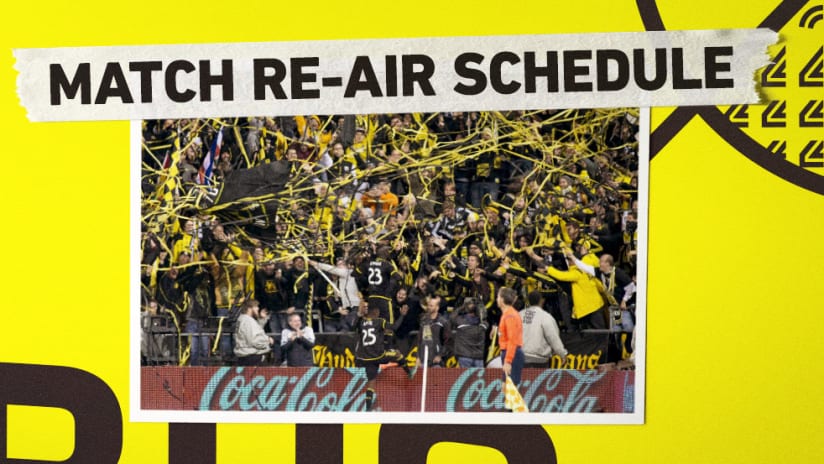EDITOR'S NOTE: In honor of Major League Soccer and the Club's 25th season, Columbus Crew SC is revisiting important moments from the Club's path. Historic match streams can be found at ColumbusCrewSC.com/stream, and more can be seen on the Club's social media channels.
Sometimes, these #OnThisDay anniversaries are an excuse to post a “things were better back in the day” message along with a highlight of a favorite player.
Of course, for many, it’s the exact opposite - a time to revel in past memories that resonate shared or personal jovial feelings.
Well, around this day nearly 25 years ago, the promise of the 1994 World Cup was delivered, and Major League Soccer introduced itself to thousands of live fans around the nation.
The League came in the wake of the first rendition of the North American Soccer League, which shut down in the mid-80s before being revived come the 21st century. The prospect of another, more exciting professional soccer league seemed validated by the nation’s response to the 1994 World Cup, which at the bare minimum, piqued fans’ interest in the game by mere association as the United States hosted hundreds of thousands of celebratory fans of a game that was more global than anything “made in the U.S.”
But in the multi-year buildup to the league’s introduction, which originally aimed to start in 1995, it is safe to say – as with any new startup, because that’s eventually what MLS was in the mid-90s – that there was a combination of excitement and anxiety.
The idea of celebrating a World Cup every four years is a given, but that same comfort was not necessarily there for players, investors, and sponsors of Major League Soccer, say, in 1996.
Now, after over two and a half decades with the Columbus Crew as the official team doctor and now an Investor-Operator, Dr. Pete Edwards spoke on his initial introduction to the Crew during the early rumbles of MLS forming, to the lessons he’s learned through his tenure on the support staff and what that has provided him in this new leadership position.
GETTING IT OFF THE GROUND…AND WHERE TO TRAIN?
“That first year was totally unscripted,” Dr. Edwards said, who initially introduced himself to league officials in the early 90’s before Columbus was even awarded a franchise.
In some instances, sponsors and TV deals were being implemented before team rosters were officially established, let alone the support staff.
Thankfully, for the prospects of having a team in Columbus, finding a designated team doctor was not on the list of worries.
“When [MLS] had combine physicals in the very beginning when the league was being born, I offered my services to help in any way possible. So I was in contact with the league before Columbus was even awarded a franchise. I said ‘I heard we might get a franchise, if we do get one, I want to help however I can. I’d love to be the doctor for the team. I’d love to do whatever.’ So that’s kind of how it started. Once the team was named, they said ‘Oh we’ve already got a guy who’s willing to get involved upfront in Columbus to be the doctor. That’s one less thing we have to worry about.’”
Prior to the Crew's arrival, there were no professional sports in Columbus at the time, but part of Dr. Edwards' medical training included taking care of professional athletes – something he found very rewarding – so naturally he took advantage of the opportunity, he said.
“In my training, I got to take care of professional athletes and it was really fun and rewarding. You develop a relationship with the players that is different than at other levels. I really enjoyed my experience with dealing with professional athletes in my training. So when the opportunity came and we may get a professional sport in Columbus, I said I’m going to go after that opportunity because I think it would be rewarding, fun for the community, all the above.”
Fast-forward through the 1996 draft (spoiler: Columbus selected Brian McBride first overall), as well as an interesting story regarding first player physicals (which may or may not have happened at a closed-off hotel bar off Interstate 75), a Crew roster and a coaching staff were established, but not much else, Edwards said.
“We had a team, we had a coach, but we didn’t have anywhere to train. We’re playing games at Ohio State’s stadium, and they wouldn’t let us use the stadium to train in. So we actually trained in a grassy, sometimes mowed-sometimes not, area outside the fence of Ohio State’s stadium, so we didn’t even have a proper soccer field to train on.
“So the reality of ‘yes, we’re going to have a league, we’re ready to have a league,’ but how do you do that? That just wasn’t worked out when we started.”
LEADERS FROM THE START
Needless to say, the lack of structure wasn’t limited to a singular franchise in the early MLS days, but something that was inherently Crew-related was the progressive nature from the team’s medical staff.
“I am proud to say that even back then, we were very progressive in terms of how we handled the medical side of training and player preparedness,” Edwards said.
One of the facets Edwards specifically highlighted was how Columbus was the first professional sports team in the United States that is a men’s sport to hire a woman as its head athletic trainer.
“People talk about all the stuff that’s happening [currently] … but the reality is, we were the first team in North America to have a [female] head athletic trainer for a men’s sport. Her name is Amy Armstrong, now Amy Baer.”
Baer, as Edwards said, was simply the best person for the job, and currently works in Edwards’ practice here in central Ohio.
“Back in the day… she was a physical therapist and athletic trainer. I had worked with her for a year and I thought she does a good job. I don’t care if it’s male or female or otherwise, I think she’d be a great person to be our first trainer. But then I had to go Timo Liekoski and say ‘are you okay with this?’ And he looked at me and he said ‘I want the best person,’ and I said ‘well she’s the best person I got,’ and he said ‘fine, we’ll do it.’”
“That was a huge leap of faith in terms of Timo being willing,” Edwards said.
“It wasn’t about breaking ground, it was about having the best person. It took 20 years before the other leagues started to think about having that situation arise. Not only were we ahead of the player and team prep, but we were also ahead of having women involved in men’s sport.”
GAMEDAY’S ARRIVAL
The leadup to gameday was a Taijitu (look it up) of excitement and anxiety.
Yes, tickets had been sold. Yes, a game was going to happen. But that was about the extent of it.
“Oh my god, we’re in this probably 95,000 people stadium back then, what if nobody shows up?”
“What’s it going to look like with banners over the upper decks where we don’t sell anything?”
“Is it going to seem totally empty?”
“How’s the pitch going to be? Because the pitch was a little bit on the small side, so how were we going to do playing on a smaller pitch because there wasn’t as much room there as there was for a standard pitch.”
Overarching those worries was the sentiment, however, that simply playing the game calmed the nerves. It was an anxious moment with the number of logistical hurdles and the limited local & national corporate support, but from a macro-level, it was a positively monumental moment:
Major League Soccer would be played on home soil! No more trials in Europe. No more living away from family and friends.
It was like going to a party where you don’t really know the host, but at least you know your friends are there.
“The fact that a lot of these guys, especially the guys that were established pros had been playing in Europe, so they were super excited to be given the opportunity to come home and play. So, it was a little of anxiety about the newness, but it was really exciting for some of our better players to be able to come home and play professionally for the first time in the United States.”
Of course, the game went about as well as anyone (minus D.C. United fans) could have hoped for – a 4-0 shutout win in front of 25,000-plus fans.
And much different than an otherwise disappointing MLS debut a week earlier between the San Jose Clash & D.C. United, this initial impression was naturally going to cement some type of legacy into Crew lore should the result go the Club’s way.
“We were hoping we were building something that would last and that our kids would be watching 25 years later. That excitement from that first game and the traditions we were building were all super important to us,” Edwards said.
WHAT MAKES MEMORIES
The memories of that 4-0 inaugural match don’t just reside in the final score.
Over 25-plus years of being involved in the sport of soccer, Edwards explained that what mattered to him back then and what matters to the Club going forward is the idea of relationship-building.
“One of the reasons that our sports medicine team was what it was was that we really did focus on the relationships. I went to players' weddings; I went to players' kid’s christenings. We had players that would babysit. I took my children to spring training, so we would be together with the players a lot. A lot of them didn’t have their kids with them, so my kids got to be their surrogate kids. The guys would take turns pretending that my daughters were their kids because they missed their kids while they were gone in Europe or wherever we were for 2 or 3 weeks. I think the relationship side was the most important thing. They were lasting relationships.”
Edwards’ stories of the team’s familial attitude could be turned into a book, honestly, but there’s a Golden Rule from his professional background that has always been a foundational factor in the first MLS franchise, since before April 13, 1996.
“Treat patients the way you would treat your own kids. Make sure that the players know that you care about them as a person, as a player second. You’re going to do what’s best for them and go the extra mile for them.
“Those things matter, it’s what you would do for your kid or your family member. So you should do it for everybody.”




